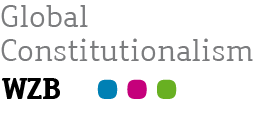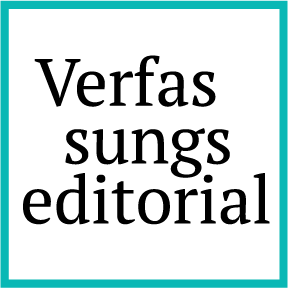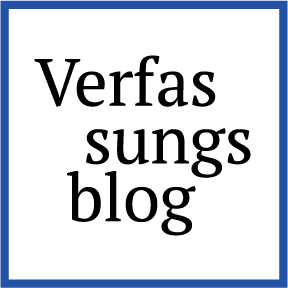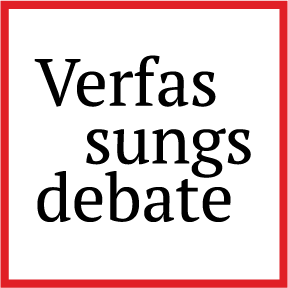From Democracy to Dynastic Rule?
The 2025 Constitutional Reform in Nicaragua
On January 30, 2025, the National Assembly of Nicaragua approved a constitutional reform that significantly strengthens the power of President Daniel Ortega and his wife, Vice President Rosario Murillo. As highlighted by several international actors, the amendments introduced profoundly transform the country’s political system, reinforcing the Executive’s influence over other branches of the state. Many observers describe the reform as yet another step toward the institutionalization of an actual “family dictatorship”.
However, this radical change is not entirely disconnected from the past. In this regard, Nicaragua has historically been a highly fragile territory from a social and political standpoint, both due to internal factors and external influences. In fact, Nicaragua has undergone profound political transformations throughout the 20th and 21st centuries. From the 1978-79 Revolution to the recent constitutional reform of 2025, the country has experienced periods of dictatorship, civil war, democratization, and a return to authoritarianism.
This analysis aims to trace the political evolution of Nicaragua, examining the key stages that have led to the country’s current situation under the government of President Daniel Ortega, in order to better understand how the constitutional framework of the state is changing now.
Political history of Nicaragua in the 20th century
Nicaragua’s political history in the 20th century was marked by the U.S. occupation (1912-1933) and the subsequent dictatorship of the Somoza family, which – albeit not continuously – ruled the country from 1937 to 1979 with the support of the United States. The Somoza dynasty controlled Nicaragua through a system of corruption and repression, with the National Guard serving as the main tool for maintaining power.
For these reasons, public discontent grew in the 1960s and 1970s, fueled by social inequalities, widespread poverty, and political repression. It was in this context that the Sandinista National Liberation Front (FSLN) emerged – a movement inspired by the historical figure of Augusto César Sandino, the leader of the resistance against the U.S. occupation in the 1920s and 1930s.
After years of guerrilla warfare and upheaval, on July 19, 1979, the FSLN succeeded in overthrowing the regime of Anastasio Somoza Debayle, the last heir of the dynasty. The Sandinista Revolution marked a historic turning point for Nicaragua: For the first time, the country embarked on an experiment in socialist governance (following the path of many other Latin American states of the time), with economic and social reforms aimed at wealth redistribution and reducing inequalities.
Following its victory, the FSLN, led by Daniel Ortega himself, took control of the government and launched a series of reforms, including the nationalization of industries, agrarian reform, mass literacy campaigns, and the expansion of healthcare services. However, these transformations occurred in a context of strong international hostility, particularly from the United States, which viewed Sandinism as a new communist threat within the broader framework of the Cold War.
At the beginning of the 1980s, the U.S. administration under Ronald Reagan funded and trained the so-called Contras, a paramilitary opposition group that waged armed resistance against the Sandinista government. The resulting civil war was devastating: Amnesty International said that tens of thousands of Nicaraguans lost their lives, and the country suffered an economic collapse due to both the conflict and the concurrent U.S. economic embargo.
In 1984, Nicaragua held its first democratic elections under the Sandinista government. Ortega, who had led the country for five years as “Coordinator of the Junta of National Reconstruction”, won with 67% of the vote, but the war continued until 1990, when the FSLN agreed to hold new elections under international mediation. The 1990 elections marked a historical turning point: Violeta Chamorro, candidate of the National Opposition Union (UNO), defeated Ortega. Her victory ended the civil war and brought a government oriented toward neoliberalism and economic reconstruction.
From the 1990s to the present
In the following years, Chamorro and her successors – Arnoldo Alemán (1997-2002) and Enrique Bolaños (2002-2007) – implemented policies of privatization, reduction of state intervention, and economic liberalization. Although these measures contributed to economic stabilization, they also increased social inequality and poverty.
During this period, the FSLN reorganized as an opposition party, with Ortega maintaining control over the movement. Consequently, in 2006, Daniel Ortega won the presidential elections again, returning to power after 16 years in opposition. However, his government now presented itself differently than in the 1980s: This time, Ortega adopted a so-called policy of “Christian socialism, solidarity, and a mixed economy”, combining social programs with alliances with the private sector.
One of the key factors behind his success was the economic support from Venezuela, which, under Hugo Chávez, provided substantial funding to Nicaragua through the Bolivarian Alliance for the Peoples of Our America (ALBA – Alianza Bolivariana para los Pueblos de Nuestra América). Thanks to these funds, Ortega was able to launch social programs that bolstered his popularity among the lower classes.
Over the years, however, despite its initial promises, Ortega’s government increasingly displayed authoritarian tendencies. Indeed, constitutional reforms were gradually introduced to enable the ruling majority to control the electoral system, ensuring the FSLN’s dominance in subsequent elections and the indefinite reelection of the president. Additionally, opposition forces were being systematically repressed, including arrests of dissidents and restrictions on press freedom.
The successive elections saw Ortega reelected by an overwhelming majority, albeit amid accusations of electoral fraud and violence. For these reasons, in 2018, Nicaragua was shaken by a wave of anti-government protests, initially triggered by a significant pension system reform. However, after the government reversed these pension measures, the demonstrations quickly evolved into broader protests against Ortega’s regime, with thousands taking to the streets to demand his resignation. The government’s response was brutal, culminating in massacres of protesters, such as the so-called “Mother’s Day Massacre” on May 30, 2018, which left nearly 200 injured and 15 dead.
The 2025 constitutional reform
Since then, the Ortega government has continued to suppress any form of opposition, arresting political leaders, journalists, and human rights activists. These developments built up to the recent constitutional change, where the Nicaraguan legislature reformed almost the entire Constitution, amending 148 out of 198 articles.
The core of the reform lies in the amendment of Article 132 of the Constitution, which now grants the President of the Republic the coordination of the legislative, judicial, and electoral branches, as well as control over the regions and municipalities. Moreover, under this provision, the Presidency of the Republic oversees not only of the Nicaraguan Army but also the Ministry of the Interior and the National Police. This provision illustrates that the intention is to centralize power in the hands of the Executive branch, which, with its current configuration, takes on a distinctly authoritarian role.
The second novelty introduced by the reform, closely tied to Ortega’s autocratic plan, is the establishment of a diarchìa, namely a form of government in which sovereign power is exercised, with equal authority, by two persons, through the introduction of a co-presidency. Indeed, the amended Article 133 now provides that the Presidency of the Republic shall consist of two Co-Presidents, both holding equal presidential power, elected by an absolute majority through universal, free, and direct suffrage. It is worth noting that the reformed text of Article 133 refers to a Co-President and a Co-Presidenta (female co-president). While this reform might seem to respect gender equality, the underlying rationale of the provision is different. In fact, the provision is intended to automatically confer the position of Co-President upon Vice President Rosario Murillo, despite her not having been elected to that position in the previous presidential elections by universal, free, and direct suffrage according to Article 133. It is therefore evident that this provision was specifically designed to serve the interests of Ortega and his wife, Rosario Murillo. This is further confirmed by the reformed Article 135, which extends the current presidential term from five to six years.
Thirdly, the reformed Article 136 establishes that the Presidency of the Republic is the only body authorized to propose candidates for the Supreme Court of Justice, to appoint its vice-presidents, and to veto all or part of legislative proposals.
In an effort to further centralize power within the Executive, the new text of Article 137 grants the two Co-Presidents not only the power to appoint any number of vice-presidents without these being chosen through popular vote but also the authority to appoint and revoke ministers and deputy ministers, the attorney general and deputy attorney general of the Republic, the directors of autonomous and governmental entities, as well as the heads of diplomatic missions and special missions.
To further strengthen presidential power, and in particular control and surveillance over citizens, Article 92-ter establishes the Patriotic Reserve Military Forces as part of the Nicaraguan Army. These forces will be composed of voluntarily officers, officials, non-commissioned officers, enlisted personnel, soldiers, and sailors who have retired or been honorably discharged. Similarly, Article 97 sets up a voluntary police force as auxiliary to the National Police, composed of Nicaraguan citizens providing services on a voluntary basis. In brief, the reform puts military and police forces at the service of Presidents Ortega and Murillo. Hence, the constitutional changes enacted with the new reform clearly contradicts with the socialist values that the same Constitutional text aims at achieving.
The rise of autocratic legalism
This reform – proposed by Ortega himself – is yet another clear example of what scholars have defined as autocratic legalism, namely, the use of legal mechanisms to undermine the rule of law. This concept describes how democratic procedures can be employed to implement illiberal agendas and subordinate democratic institutions to authoritarian control. Similar patterns have emerged in other countries, such as Poland and Hungary, where constitutional changes weakened judicial independence.
Despite international warnings, Nicaragua’s trajectory suggests a deepening authoritarian project that has been unfolding since Ortega’s return to power, ultimately confirming that the country has never truly broken free from its authoritarian past.
Conclusively, it is interesting to note that not only has the reform been harshly criticized by international actors engaged with the protection of fundamental rights, but it was also opposed by the same Nicaraguans. In fact, a consistent group of exiled political opponents, by jointly submitting a public declaration have rightly – we believe – addressed the new Constitutional text as “autogolpe de Estado” and as a declaration of a political war against Nicaraguans, calling for the citizens’ collective intervention.
The original Italian version of this article was published on Voci Costituzionali.




It is impossible to understand recent developments in Nicaragua without recording properly what happened in 2018. Describing events merely as ‘protests’ is completely inadequate, given that many government supporters were injured, kidnapped, tortured and killed, and the victims included 22 police officers killed and 400 injured. The coup attempt brought the country to its knees for three months, wrecking the economy. Only by recognising the true nature of the events in 2018 can government action since then – supported by most Nicaraguans – be understood.